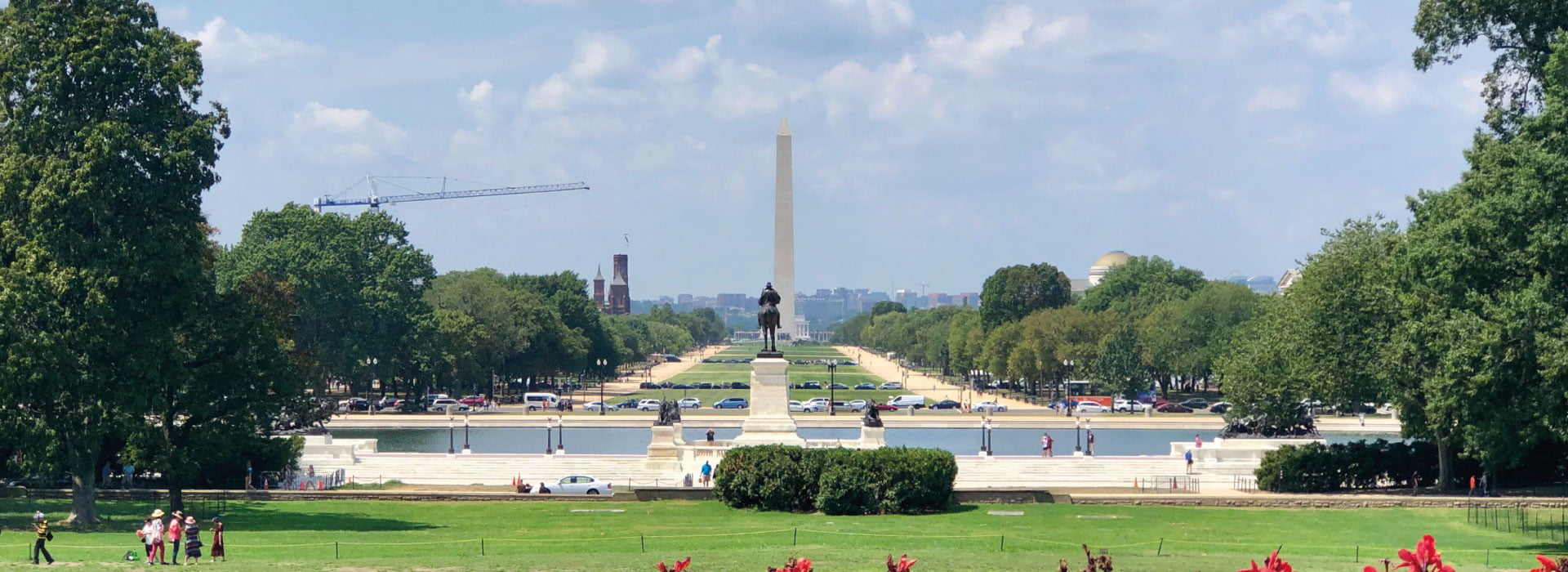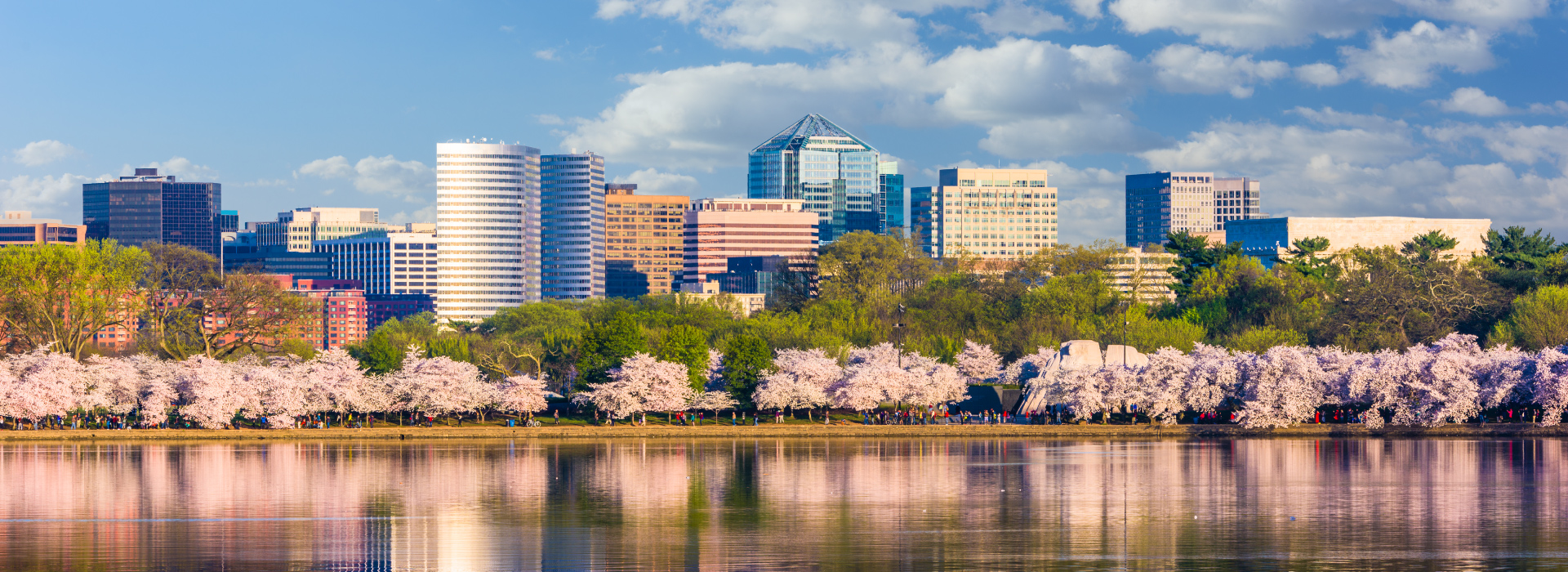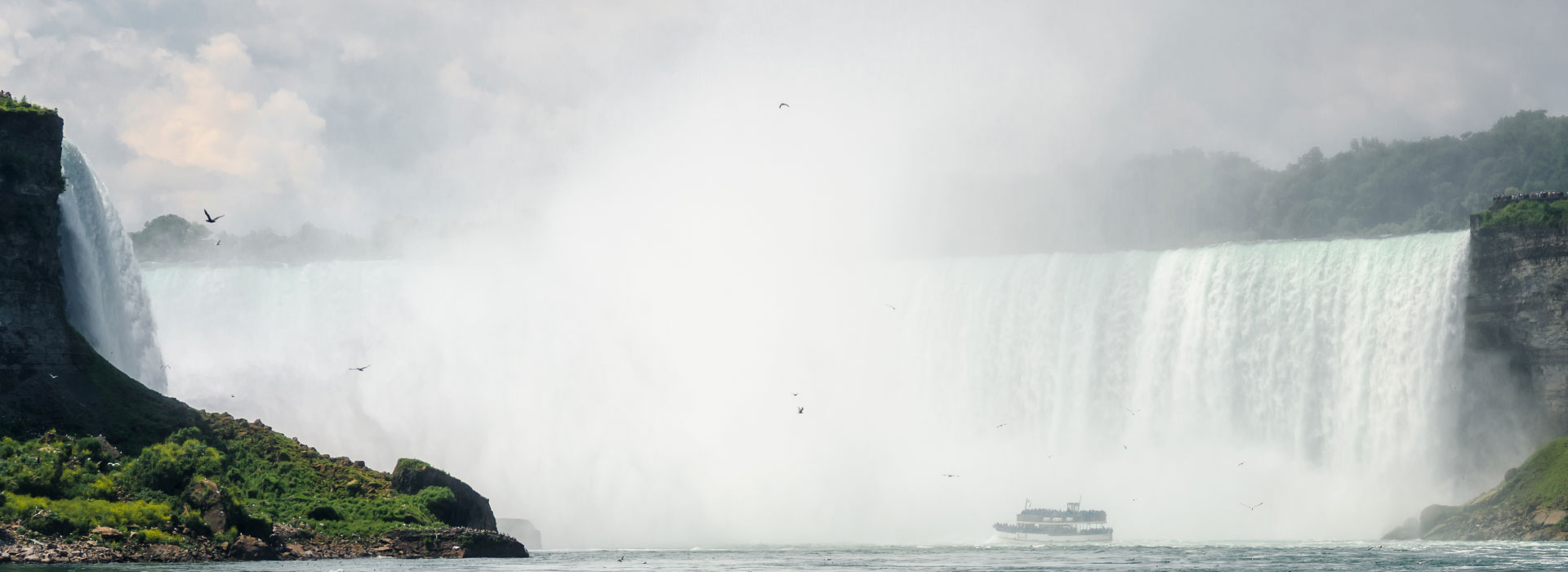When visiting Washington DC there are a lot of places to visit, apart from the many historical monuments and political and military relics. Washington has museums that keep hundreds of documents and pieces that have been of great value for scientific and technological development worldwide.
Among all the artistic and cultural squares of the city, The National Air and Space Museum is one of the mandatory stops on your visit to the capital of the United States, it does not matter if you arrive for vacation, a work trip or if you are taking a Day Trip to Washington DC from New York. Moreover, as a result of the celebration of 50 years after the Apollo 11 moon landing, commemorated on July 20, a milestone in the history of mankind, the museum has been the meeting place for tourists and residents to see a bit of aerospace history.
A place dedicated to teaching everything about space to young and old.
What is The National Air And Space Museum?

The National Air and Space Museum is part of one of the Smithsonian Institution’s research centers, which contains airplanes and spacecraft used around the world and at different times in history as part of its display. Most of the pieces used in the different collections are originals or at least they are reserve copies, so these have been key to studying aeronautical and aerospace science and technology, but they have also been very useful to analyze terrestrial geology and the geophysics.
Since 1976, the year of its foundation, the museum has received millions of visitors, as it has been considered one of the most fascinating museums in the city, not only for aviation lovers but for anyone who wants to know a little history. In fact, the annual numbers of visitors exceed those of other international museums such as the Louvre (Paris, France) or the Prado (Madrid, Spain).
History of the National Air and Space Museum
The first meeting between aviation and the Smithsonian began in 1861, when physicist Joseph Henry, director of the institution and enthusiast of balloons and sky, invited Thaddeus Sobieski Constantine Lowe to make a public demonstration of the inflation of his hot air balloon at the facilities of the research center. Such a demonstration led to American aerial reconnaissance during the Civil War.
From that moment on, Joseph Henry was in charge of collecting elements related to aviation that, in 1976, would be exhibited in what is now known as the National Museum of Air and Space, which today is the largest collection of space and aeronautical artifacts in the world. As a curious fact, the first objects that were part of this collection were a group of 20 comets of the Imperial Chinese Commission.
Initially the artifacts were located in the Art & Industries building, after World War I they were moved to “Tin Shed” a hut run by the War Department, where the entire collection was housed from 1920 to 1975.
In 1946, former President Harry Truman signed a bill establishing the Smithsonian National Air Museum as a key piece to commemorate the development of aviation, in order to collect, conserve and exhibit aeronautical artifacts that would later serve an educational purpose for the state and advancement of aviation.
With the passage of time and after the large volume of artifacts collected, the “Tin Shed” had to be replaced by a larger space, as there were artifacts scattered throughout the country that had to be added to the collection. For example, in Chicago there was a collection of warplanes, engines and missiles, while in Norfolk there was another similar collection guarded by the United States Navy.
In 1951, following the Korean War, the museum moved much of the exhibition to a site on Silver Hill in order to save the collection. This rapid action was taken by Paul Garber, the museum’s first curator, by whom the Paul E. Garber Preservation, Restoration and Storage Facility was created in 1980.
Since 1916 the Smithsonian was financially supporting rocket and space flight research, so in 1966 former President Lyndon Johnson signed a new bill that changed the museum’s name to the National Air and Space Museum, as it is known today. By that time it was already necessary to commemorate the development of aviation, but also to highlight the development in space flights. From that time the collection expanded and began to include missiles and space rockets, some of them exhibited in “Rocket Row” or the Building of Arts and Industries.
In 1971 funding was approved for the construction of a new building that would be located in the National Mall, where it is today and that you can visit after a day trip through Washington. And that same year, the secretary of the Smithsonian gave Michael Collins, a former Apollo 11 astronaut, the position of director of the museum. Since then it would be Collins who would be in charge of guiding the construction, organizing the exhibits and launching the Planetary and Earth Studies Center, division responsible for analyzing spacecraft data and being the leading center for observation and photography of the Apollo-Soyuz project.
The building was inaugurated In 1972, but there began the arduous work of organizing the exhibitions, which included planes and spacecraft, so by July 1, 1976, the official public inauguration of the National Museum of Air and Space took place.
Its success exceeded expectations, just 6 months after the inauguration more than 5 million people had visited the museum, making it, at present, one of the most visited museums in the world.
In 2003, two days after celebrating the centenary of the Wright brothers’ flight (in 1903), the museum opened a new headquarters at the Washington Dulles International Airport in northern Virginia. It is much smaller, in size, but exhibits more than 150 aircraft plus rockets, missiles, satellites and other spacecraft, it also houses a collection processing unit, a conservation laboratory and a collection repository for small artifacts.
What can you see in the Air and Space Museum?
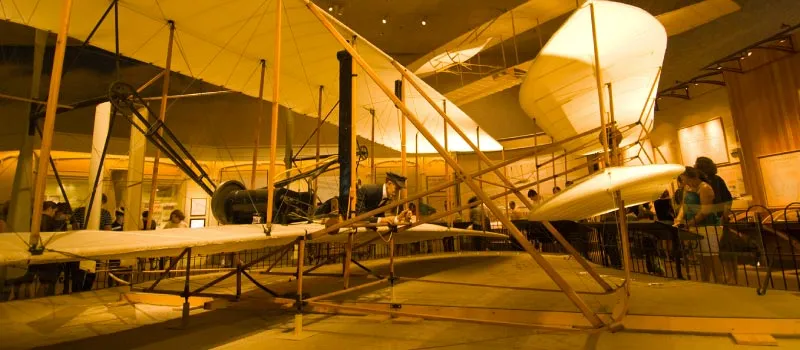
The complete exhibition is full of airplanes and ships that have been an important part in the world history of aviation, among them are airplanes that fought during World War II, ships that were part of the moon landing, or some others that helped transform the world of aviation to what we know today. Among the exhibits you will find:
- The Spirit of Saint Louis, the first ship to fly across the Atlantic Ocean piloted by Charles Lindberg in 1927.
- The Wright Flyer, a vehicle that has been considered the first aircraft in history, manufactured by the Wright brothers in 1903.
- The Bell X-1, used by Chuck Yeager to execute the first supersonic flight.
- The previously mentioned Apollo 11, used to take the first crew to the Moon, including Neil Armstrong.
- SpaceShipOne, the first vehicle piloted to reach space.
- Rocks brought from Mars.
- Moon rock samples.
- The prototype of the Boeing B707.
- SR-71 Blackbird, ship used for espionage.
- Air France Concorde plane, famous supersonic plane used to transport passengers.
- Discovery space shuttle.
- Enola Gay, plane used to drop the atomic bomb on Hiroshima in 1945.
And even more pieces, ships and garments used by the most important figures in the industry. The second headquarters, located near Dulles International Airport, is home to more than 200 aircraft and more than 130 spacecraft. In addition, in each room the exhibitions are set in such a way that they provide a bit of realism, allowing viewers to recreate spatial scenes as if they were there.
What started with a small group of 20 Chinese comets now has more than 60,000 artifacts, of all sizes and times. Many of these objects are on display to the public, others are on display in other museums – on loan – and many others are in storage, undergoing restoration and remodeling.
However, the museum remains the largest institution in the United States dedicated to commemorating, preserving, collecting and studying aviation and space technology. In fact, it has also ventured into the field of planetary research, so much so that many of the members of the Study Center participated in all active missions to Mars, Mercury and the Moon.
Exhibitions at the Smithsonian National Air & Space Museum
1. Space race
It reflects the spatial conflict between the USA and the Soviet Union that began shortly after World War II. When, following the confrontation for democracy against communism, each country competed to overcome the achievements of the other in a “space race”.
In this exhibition you will know the military origins, the race to the Moon, the satellites development, the work done on Earth to cover the acts of each country and the presence that each one had in space. Items in this collection include a German buzzer bomb, a V2 missile, spacecraft and spacesuits from both countries, a Skylab orbital workshop and a test version of the Hubble Space Telescope.
2. Acrobatic flight
Learn everything about acrobatic flight and its history, starting with Wilbur Wright, pioneer in this field of public exhibitions aboard a Wright Flyer, in 1908, until reaching the current aerial acrobatics with military combat aircraft.
These stunts include altitude, racing, climbing, diving, and dramatic twists that ultimately helped the military improve combat tactics and aircraft technology. Today it is still used tactically but also for exhibitions, competitions and fun.
3. America by air – reimagined
Along with the renovation of the museum, in 2022 will come the exhibition “America by Air” that recreates the history of US air transport, explores how the government shaped the airline industry and shows how technological advances have evolved and improved the flying experience.
4. Application satellites
From the beginnings of the space age, it was determined that satellites would bring unique benefits to the Earth by being able to see and communicate from vast distances. During the Cold War, satellite applications were focused to cover the needs of national security and to cover civilian interests, currently there are hundreds of satellites, civilian and military, that orbit the earth to provide communication services, photography, meteorological analysis, navigation and remote sensors, becoming an integral part of contemporary life.
5. Business aviation
Learn about the history of business aviation, which began after World War I and substantially grew after World War II. This exhibition shows the evolution of aircraft used for this purpose, which today range from small propeller-powered aircraft to “bizjets” that are fast and can fly internationally, without stopovers.
6. Clouds in a bag
The objects exhibited here are part of the rich collection of Evelyn Way Kendall and Henry Plimpton Kendall, a married couple who, from 1920 to 1960, dedicated themselves to collect more than 1000 pieces of art, paintings, manuscripts, objects and books that document the history of balloon flight.
Objects that, at the end of 18th century, surprised thousands of people who began to see balloons rising over the roofs of their homes, in several cities in Europe. At this time, the invention of the globe seemed like a miracle, as it was the first time that science and technology had taken human beings flying through the sky.
Each of the artifacts in this collection show the amazement and emotion experienced by those who witnessed the birth of the flight, by 1783.
7. Commercial aviation
Here are exhibited some of the aircraft that marked the history of commercial aviation, you can see a Junkers Ju 52/3m, a popular German aircraft of the 1930s; a Boeing 307 Stratoliner, the first commercial pressurized aircraft; the Boeing 367-80 Dash 80 , the prototype of the Boeing 707, the first US jet airliner; and an Air France Concorde, the first supersonic aircraft.
At the beginning of the 20th century flying was something bold and innovative, but at the end of the century, in the United States it was possible to travel between cities in a few hours. Undoubtedly, commercial aviation has revolutionized the world and, now, is an essential aspect of life.
8. Explore the universe
As the tools used to study the universe have changed, so has the way of defining what the universe is like. In this exhibition you will learn about some of the astronomical instruments used to study the universe and its evolution, including the telescope, photography, spectroscopy and digital technology.
9. General aviation
By general aviation we refer to all unscheduled flights that are not piloted by military or military carriers, among these can be located personal (business) flights, medical flights and tourist tours, which account for three-fourths of flight operations in the US.
Learn about the evolution, functions and the most attractive of this type of aviation, as it is a viable and efficient alternative, even more than commercial aviation.
10. How things fly
Find the answer to the most common questions about air and space flight in a gallery that allows you to explore the basic principles that allow planes and spacecraft to fly.
This exhibition is interactive, so here you can play and discover the answers to questions such as: How does a plane hold in the air? How can a plane propel itself without anything holding it? The goal is for you to explore the relationship between gravity and air so that you understand how airplane wings work, understand supersonic flight or learn curiosities about flying in space.
11. Human spaceflight
Learn about everything that was involved in the design, development and execution of manned space flights, from the first space adventure, in 1961, to the flight of astronauts that have lasted months orbiting the Earth.
12. Interwar military aviation
Since World War I, the US recognized the potential of aircraft as a military weapon, which led the American military forces to work to materialize their different visions in which the aircraft functions as the main combat defense. The collection has military aircraft from the 1920s and 1930s, many of which are unique in their type and unique survivors of various armed combats.
Where Is The Air And Space Museum Located?
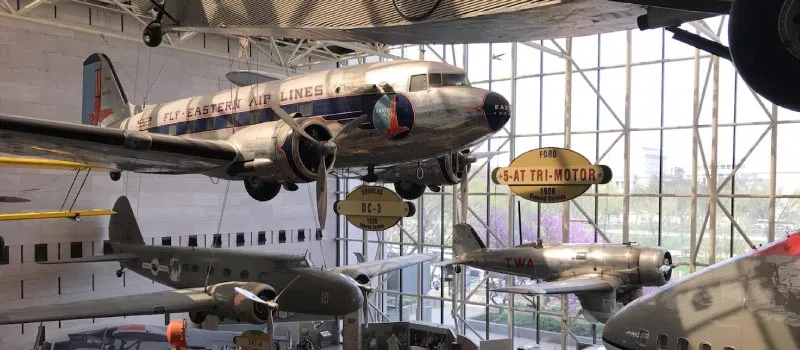
The National Mall houses the main headquarters of the National Air and Space Museum, located right between the National Museum of the American Indians and the Hirshhorn Museum, to be more specific it is on Independence Avenue and 6th Street. Currently this is the main headquarters, however since 2003, thanks to a private donation, the museum has a secondary headquarters at the F. Udvar-Hazy Center, in Chantilly.
Both museum venues are open from Sunday to Sunday, except for December 25th, admission is completely free and the hours are from 10 am to 5:30 pm.
In addition to the exhibits already mentioned, this place has a 3D IMAX movie theater and a Planetarium, the entrance to each of them costs about $ 10 dollars.
When taking a Day trip to DC from NYC this is one of the main stops, as it is not a historical monument per se but it does contain a lot of history inside.
If you have the opportunity to visit the capital of the United States, take some time to visit each of the rooms and detail each exhibition, even if you are not passionate about aviation, we are sure that this museum will capture your full attention. In fact, among the many films that have been filmed in Washington DC , “A night at the museum 2” has been the one that has given the museum the most attributions, even Amelia Earhart is one of the main characters of the film.
Pack your bags and join us on an adventure through the most important city in the USA, and why not? get ready to take one of the many souvenirs they have there for you and your family, something different and unique.
Due to the health emergency caused by COVID-19 and by renovations in the building, the museum will be closed during the spring of 2022.

